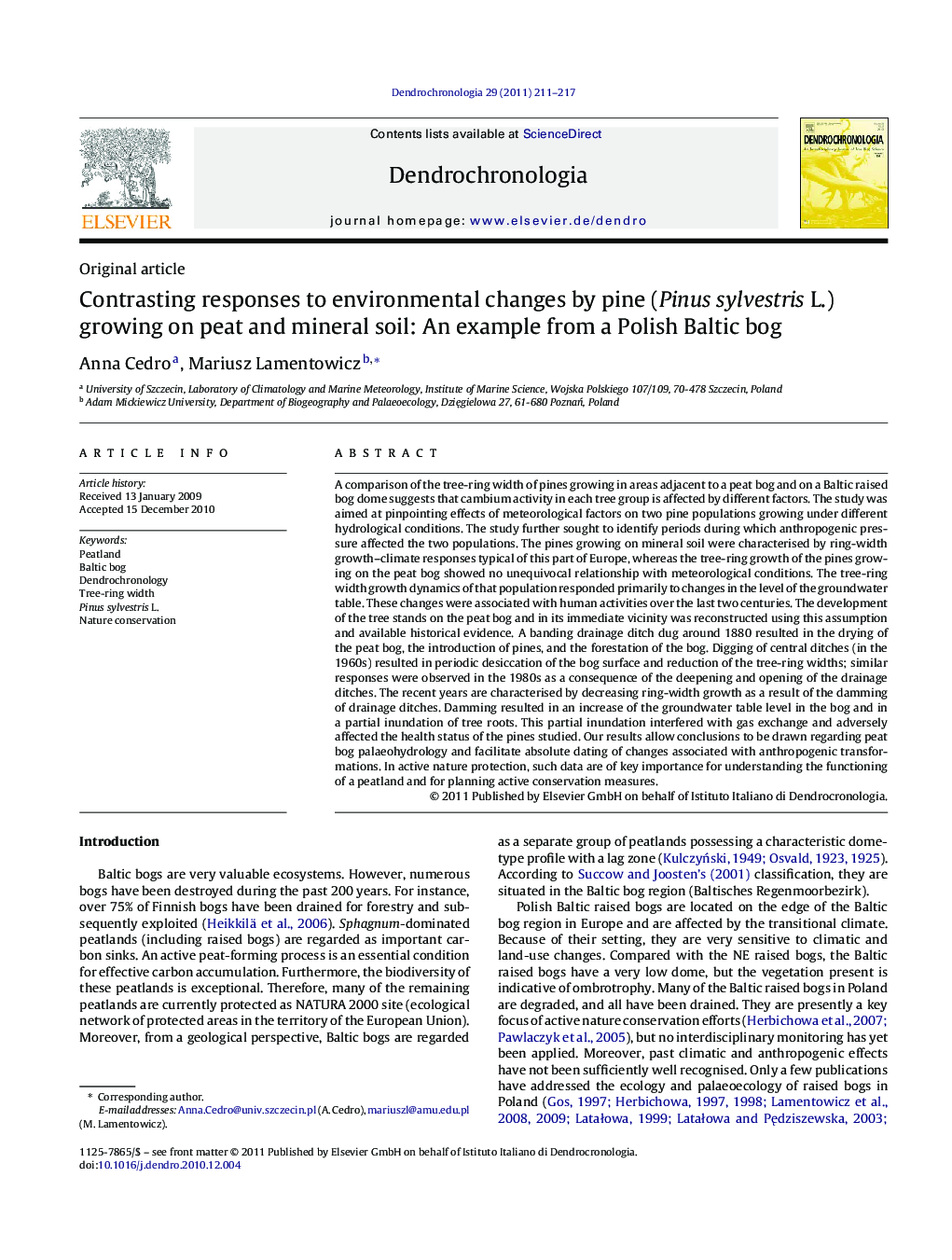| Article ID | Journal | Published Year | Pages | File Type |
|---|---|---|---|---|
| 10250261 | Dendrochronologia | 2011 | 7 Pages |
Abstract
A comparison of the tree-ring width of pines growing in areas adjacent to a peat bog and on a Baltic raised bog dome suggests that cambium activity in each tree group is affected by different factors. The study was aimed at pinpointing effects of meteorological factors on two pine populations growing under different hydrological conditions. The study further sought to identify periods during which anthropogenic pressure affected the two populations. The pines growing on mineral soil were characterised by ring-width growth-climate responses typical of this part of Europe, whereas the tree-ring growth of the pines growing on the peat bog showed no unequivocal relationship with meteorological conditions. The tree-ring width growth dynamics of that population responded primarily to changes in the level of the groundwater table. These changes were associated with human activities over the last two centuries. The development of the tree stands on the peat bog and in its immediate vicinity was reconstructed using this assumption and available historical evidence. A banding drainage ditch dug around 1880 resulted in the drying of the peat bog, the introduction of pines, and the forestation of the bog. Digging of central ditches (in the 1960s) resulted in periodic desiccation of the bog surface and reduction of the tree-ring widths; similar responses were observed in the 1980s as a consequence of the deepening and opening of the drainage ditches. The recent years are characterised by decreasing ring-width growth as a result of the damming of drainage ditches. Damming resulted in an increase of the groundwater table level in the bog and in a partial inundation of tree roots. This partial inundation interfered with gas exchange and adversely affected the health status of the pines studied. Our results allow conclusions to be drawn regarding peat bog palaeohydrology and facilitate absolute dating of changes associated with anthropogenic transformations. In active nature protection, such data are of key importance for understanding the functioning of a peatland and for planning active conservation measures.
Related Topics
Physical Sciences and Engineering
Earth and Planetary Sciences
Atmospheric Science
Authors
Anna Cedro, Mariusz Lamentowicz,
